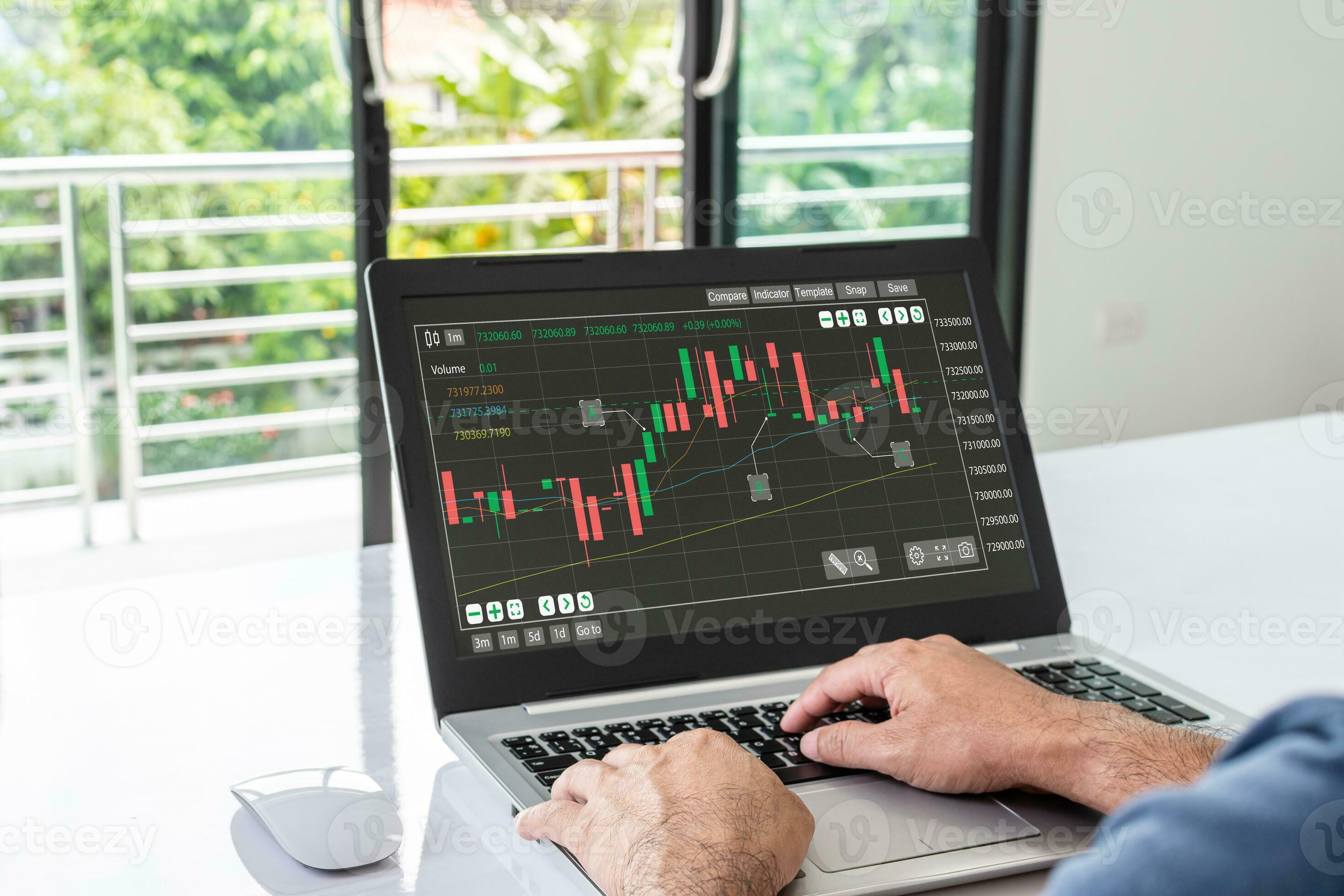You spot a sharp move in a stock and want to trade it now, but your broker flags you for too many intraday trades and locks your account. Why is day trading restricted? Rules like the pattern day trader rule, margin requirements, leverage limits, and broker risk controls from the SEC and FINRA aim to limit losses, protect capital, and keep firms solvent. This guide gives clear Day Trading Tips on account balance rules, margin calls, wash sale rules, and when a funded prop firm might help.
Goat Funded Trader, a prop firm, offers funded accounts and straightforward rules so you can trade with professional capital while learning to meet capital requirements, control risk, and stay compliant with day trading rules.
Why is Day Trading Restricted?

Day trading rules exist to shield both individual investors and the overall market from excessive risk and potential instability. Financial regulators like the U.S. Securities and Exchange Commission (SEC) and the Financial Industry Regulatory Authority (FINRA) mandate these guidelines to preserve fair and transparent market conditions. Their intervention is primarily driven by the high volatility and complexity inherent in day trading activities.
One of the central regulations is the Pattern Day Trader (PDT) rule. Traders who execute four or more day trades over five business days in a margin account are classified as pattern day traders. These individuals must maintain at least $25,000 in account equity at all times. If this minimum isn’t met, they face restrictions such as account freezes or being barred from day trading until their balance is restored.
The reasoning behind these restrictions is rooted in the considerable financial risks involved. Day trading is dominated by rapid decisions and the use of leverage, which can amplify both profits and losses. With insufficient account equity, traders exposed to these risks may suffer heavy financial loss within short periods. Regulators see these limits as a safety mechanism to help prevent inexperienced or underfunded traders from taking on excessive risk.
Brokerage firms also enforce restrictions for specific accounts, especially those belonging to less experienced investors. These “benevolent brakes” are intended to stop beginners from engaging in highly volatile trading strategies or handling assets that they might not fully understand. By restricting access, brokers encourage educational growth before allowing more advanced activity.
Day trading often relies heavily on borrowed funds, making losses even more severe if trades go awry. Limits like the $25,000 rule help ensure traders have enough resources to withstand market swings and protect against scenarios where losses could outpace their ability to repay what’s borrowed from the broker.
There is ongoing discussion about the fairness of these restrictions. Some critics point out that they benefit large firms while excluding small traders, potentially affecting market competition and liquidity. Despite debate, the current rules aim to balance market integrity with trader protection, holding safeguards in place until participants demonstrate the financial strength and expertise required for high-frequency trading.
One platform that has gained attention in the day trading community is Goat Funded Trader. This prop firm offers traders the opportunity to trade with funded accounts, which can help bypass some of the financial barriers imposed by traditional restrictions like the PDT rule. By providing capital to qualified traders, Goat Funded Trader supports individuals in navigating the high-risk environment of day trading while maintaining necessary safeguards, making it an interesting option for those looking to engage in active trading within regulated frameworks.
Get 25-30% off Today - Sign up to Get Access to up to $800 today.
Goat Funded Trader is a prop firm that gives you access to simulated accounts up to $800K with the most trader-friendly conditions in the industry — no minimum targets, no time limits, triple paydays, and up to 100% profit split, plus instant funding and customizable challenges. Join over 98,000 traders who've collected more than $9.1 million, enjoy our 2-day payment guarantee with a $500 penalty for delays, and sign up now to Get Access to up to $800 today with 25 to 30 percent off.
Related Reading
- Can You Make Money Day Trading
- How Old Do You Have to Be to Day Trade
- Options Trading vs Day Trading
- Day Trading Success Stories
- Day Trading Crypto vs Stocks
- Day Trading Psychology
- Day Trading as a Side Hustle
Different Trading Regulatory Bodies and Their Restrictions On Day Trading

1. United States Regulatory Bodies and Restrictions
The Securities and Exchange Commission (SEC) is the primary regulator of securities markets in the U.S. It oversees brokerage firms, exchanges, and market participants to ensure compliance with securities laws. In day trading, the SEC enforces rules related to margin requirements, trading disclosures, and investor protection.
Financial Industry Regulatory Authority (FINRA) is a self-regulatory organization authorized by the SEC to regulate brokerage firms and registered brokers. It sets specific rules for day trading, particularly regarding Pattern Day Trader (PDT) regulations.
Key Restrictions in the U.S.
- Pattern Day Trader Rule: Traders who execute four or more day trades within five business days and whose day trades represent more than 6% of total trading activity are classified as PDTs.
- Minimum Equity Requirement: PDTs must maintain at least $25,000 in their margin account, which can be cash and eligible securities. Falling below this restricts further day trading until the minimum is restored.
- Margin and Leverage: PDTs often have 4:1 intraday buying power, allowing leverage for day trades, but overnight positions require standard margin.
- Account Restrictions: Violation of PDT rules may result in suspension of day trading privileges, cash-only trading restrictions, or account closure.
- These regulations aim to safeguard less experienced traders from excessive risk while allowing those with sufficient capital and experience to participate actively.
2. United Kingdom Regulatory Bodies and Restrictions
The Financial Conduct Authority (FCA) regulates financial markets in the UK, including day trading activities. It sets rules to ensure fair dealing, transparency, and investor protection.
Key Restrictions in the UK
- Margin Requirements: The FCA enforces strict leverage limits on retail traders (e.g., maximum leverage of 30:1 for major currency pairs, lower for other assets).
- Risk Warnings: Brokers must provide clear risk warnings and educational materials.
- Prohibition on Certain Products: The FCA has banned or restricted the sale of high-risk products like binary options to retail traders.
- Anti-Money Laundering (AML): Strict customer verification and monitoring requirements apply.
3. European Union Regulatory Bodies and Restrictions
European Securities and Markets Authority (ESMA) provides a harmonized regulatory framework across EU member states. It regulates leverage, product governance, marketing, and disclosure rules.
Key Restrictions in the EU
- Leverage Caps: ESMA restricts leverage for retail clients (for example, up to 30:1 for major FX pairs, lower for equities and cryptocurrencies).
- Margin Requirements: Enforced to limit excessive risk-taking.
- Negative Balance Protection: Customers cannot lose more than their invested capital.
- Product Intervention: Temporary bans or restrictions on risky trading products are applied when necessary.
4. Australia Regulatory Bodies and Restrictions
Australian Securities and Investments Commission (ASIC) oversees securities markets in Australia, ensuring fair trading and protecting investors.
Key Restrictions in Australia
- Margin and Leverage Limits: ASIC enforces leverage limits (e.g., maximum 20:1 leverage on forex for retail clients).
- Disclosure and Risk Warnings: Brokers must provide comprehensive product disclosures.
- Licensing Requirements: Brokers must be licensed and adhere to conduct standards.
- Anti-Scalping Rules: ASIC prohibits misleading or deceptive trading practices.
Legal Implications Surrounding Day Trading

Legality and Regulatory Framework
Day trading, the practice of buying and selling securities within the same trading day, is generally lawful in major financial markets such as the United States, the United Kingdom, Canada, and the European Union.
However, it is closely monitored and regulated by financial authorities like the U.S. Securities and Exchange Commission (SEC), the Financial Industry Regulatory Authority (FINRA), the Investment Industry Regulatory Organization of Canada (IIROC), and equivalent bodies in other jurisdictions. These organizations enforce rules designed to protect individual investors and maintain market integrity.
Pattern Day Trader (PDT) Rule
One pivotal regulation in the U.S. is the Pattern Day Trader rule overseen by FINRA. A trader who executes four or more day trades within five business days in a margin account is classified as a pattern day trader. Once designated, these traders must maintain a minimum equity balance of $25,000 in their trading accounts.
Failure to meet this threshold results in restrictions limiting the trader’s ability to place further day trades until the account is sufficiently funded. This rule intends to ensure that traders engaging in high-frequency transactions have enough capital to absorb potential losses.
Margin Requirements and Leverage Restrictions
Day trading frequently involves the use of leverage (borrowed funds) to amplify trade size and potential returns. Regulators impose strict margin requirements to limit excessive risk-taking. For example, in the U.S., a minimum margin deposit of 25% of the total trade value is mandated for day traders.
European regulators cap leverage ratios significantly, often allowing maximum leverage of 30:1 for major currency pairs and lower for more volatile assets. These limitations aim to reduce the likelihood of severe financial distress triggered by highly leveraged positions.
Account Types and Settlement Rules
Traders can operate through cash or margin accounts. Cash accounts require full upfront payment for securities purchases without leveraging borrowed money. Additionally, trades made with cash accounts must settle, typically taking two business days before the proceeds can finance new trades. This restricts the speed and volume at which day trading can occur using cash accounts compared to margin accounts, which allow borrowing to increase trade size.
Oversight Against Illegal Practices
Regulatory bodies vigilantly supervise day trading activities to prevent and penalize illegal conduct such as insider trading, where insiders use non-public material information for trading advantage, and market manipulation tactics like wash trading. These activities carry severe legal penalties, including fines, account suspensions, or criminal prosecution.
Tax Implications
In many countries, including Canada and the U.S., income derived from day trading is treated as business income rather than capital gains. This means that profits are subject to full income tax rates, but traders may also deduct legitimate business expenses and losses against other income sources. Proper record-keeping and tax consultation are strongly advised to ensure compliance.
Types Of Day Trading Restrictions

Pattern Day Trader Rule
One of the most notable restrictions is the Pattern Day Trader (PDT) rule. Traders are classified as pattern day traders if they execute four or more day trades within five business days, and these trades make up more than 6% of their total trading activity. Once classified as a PDT, traders must maintain a minimum equity balance of $25,000 in their margin account on any day they day trade. Falling below this threshold prohibits further day trading until the balance is restored.
Minimum Equity Requirements
The $25,000 minimum equity rule ensures that day traders have sufficient capital to cover their trading activities. This equity can be a combination of cash and securities that are quickly convertible to cash. If the equity drops below $25,000, the trader’s account faces restrictions that may include being limited to cash-only trading until compliance is restored.
Day Trading Buying Power
PDTs have enhanced buying power, typically up to four times the maintenance margin excess in their account, but this applies only to intraday trades. The buying power for overnight holdings is generally restricted to two times the maintenance margin. Exceeding this buying power limit can trigger a day trading margin call.
Margin Calls and Restrictions
If traders exceed their day trading buying power, brokers issue a day trading margin call requiring additional funds within five business days. Failure to meet the margin call results in restrictions such as limiting the account to cash-only trading for up to 90 days or until the margin call is satisfied. Persistent violations could lead to forced liquidations, account suspensions, or even end the brokerage relationship.
Cash Account Restrictions
Day trading is not permitted in cash accounts because all securities must be fully paid for before being sold. This restriction means that without a margin account and the associated buying power, frequent day trading cannot be carried out.
Short Sale Restrictions
Day traders also face specific rules regarding short selling, such as the short sale restriction. If a stock drops 10% from the previous day’s closing price, the short sale restriction can be activated for the remainder of the day, limiting short selling to occur only on an uptick. This prevents excessive downward pressure on a stock from short selling during volatile periods.
Regulatory Halts and Circuit Breakers
Stock exchanges may impose trading halts or circuit breakers if unusual volatility or corporate events occur. These halts restrict trading activity temporarily and protect markets from severe disruptions. Day traders must adhere to these market-wide or security-specific halts.
Related Reading
- How Much Can You Make Day Trading With $1,000
- Day Trading Indices
- What is Liquidity in Day Trading
- Can You Start Day Trading With $100
- Day Trading as a Career
- Why is Pattern Day Trading Illegal
- Are Day Trading Courses Worth It
- Best Brokerage for Day Trading
- Best Cryptos for Day Trading
- What is Day Trading Buying Power
- Best Time Frame for Day Trading
Assets Day Traders Are Restricted From Trading

Penny Stocks: Cheap Price, Big Problems
Penny stocks, typically under five dollars per share, attract day traders because of low price and big percentage moves. Brokers often block or heavily limit trading in these names. Why? Low price usually means low liquidity, huge bid-ask spreads, and wild intraday swings that create execution risk and rapid losses. Short selling becomes tougher because finding borrowable shares is hard, and Regulation SHO locate rules can prevent shorts altogether.
Short Sale Restrictions and Borrowing Limits
When a stock falls steeply intraday, exchanges and regulators can trigger short sale price tests. Rule 201 of Regulation SHO, for example, can impose a price test after a ten percent drop from the prior close and affect short sale mechanics for the remainder of that day and the next trading day. Brokers also limit short selling when available shares to borrow are scarce. That raises margin and financing costs and shuts down short-driven day trading strategies.
Illiquid Securities and Wide Spreads
Illiquid stocks and ETFs show low average daily volume and thin order books. They suffer slippage, large spreads, and stalled fills. Brokers often block rapid in-and-out trades in thinly traded symbols to protect clients from outsized execution risk. You can still trade them with limit orders, but day trading multiples of position size on thin names exposes you to market impact and sudden price gaps.
Certain Options and Complex Derivatives
Some options series, low open interest contracts, and exotic derivatives lack liquidity and have opaque pricing. Firms require higher approval levels, tighter margins, or outright bans for day trading these products. Complex strategies that use multi-leg positions or poorly quoted options magnify assignment risk, early exercise risk, and rapid gamma exposure that many retail accounts cannot support.
Penny Rule Cross Effects: Settlement, Free Riding, and Pattern Day Trader Interplay
Settlement rules and good-faith violation policies affect what you can trade intraday. Selling a security before the funds for the purchase settle can trigger a good-faith violation. The pattern day trader rule adds another layer such as accounts under the fifty-thousand-dollar equity threshold face limits on repeated intraday buying power and face margin calls sooner. These trade and settlement rules interact and often lead brokers to block specific fast-in-out actions to avoid regulatory trouble.
Brokerage Imposed Extra Limits
Brokers set their guardrails beyond FINRA and SEC rules. They can raise minimum equity for specific products, ban day trading in high volatility sectors, restrict trading hours, or reduce day trade buying power. Firms also enforce position size caps, force the use of limit orders in risky names, and require higher margin maintenance on volatile holdings. Those policies protect the broker s capital and the client s account from extreme losses and margin contagion.
Why Regulators and Brokers Restrict Day Trading
Regulatory rules aim to prevent market abuse, protect retail investors, and keep orderly markets. Pattern day trader rules limit leverage and force a minimum equity buffer so traders can survive rapid losses and margin events. Short sale and locate rules reduce abusive naked shorting. Settlement and free riding rules prevent traders from spending funds that are not yet final. Brokers add controls to mitigate operational risk, execution failure, and significant customer losses that could spill over into the clearing system.
Questions to Check Your Exposure
Which names in your watchlist have low average daily volume or wide spreads? Do you know the borrowing availability for the stocks you short? Have you reviewed your broker s day trade buying power and margin maintenance rules? Answering these shows where restrictions will bite and helps you plan safer trade sizing.
How to Avoid Day Trading Restrictions/

1. Maintain $25,000 In Your Account
One straightforward way to avoid the PDT restrictions is by ensuring your brokerage account balance is always at or above $25,000. This threshold exempts you from the pattern day trader rules, granting you unlimited day trading capabilities. Consistently maintaining this balance keeps you within the regulatory guidelines and avoids any forced restrictions or account freezes.
Having a sufficient balance also means you can trade more freely, allowing for increased flexibility in executing trades without worrying about hitting the day trading limit. Experts widely recommend this method as the most reliable way to evade PDT limitations.
2. Limit The Number of Trades
For traders who do not have $25,000 in their accounts, a more straightforward tactic is to reduce the frequency of day trades. The PDT rule kicks in after making four or more day trades within five business days, so limiting yourself to no more than three day trades within this window keeps you under the radar.
By focusing on quality trades, rather than quantity, you can minimize regulatory constraints while potentially achieving better returns. This disciplined approach encourages strategic trading and avoids impulsive, risky moves that might trigger PDT restrictions.
3. Explore Alternative Trading Styles like Swing Trading
Swing trading involves holding a security for several days or weeks rather than buying and selling within the same day, which means it does not count as a day trade under PDT rules. This longer-term strategy can help traders stay active in the market without worrying about day trading limits.
By capitalizing on price movements over a few days or more, swing traders can reduce the pace of their trades without sacrificing opportunities. This method benefits traders who want to keep trading but prefer to avoid the strict timing constraints of day trading.
4. Use Multiple Brokerage Accounts
Instead of placing all your funds into a single account, splitting your capital across multiple margin accounts at different brokers can provide more flexibility. Each account allows up to three day trades within five business days before hitting PDT restrictions, effectively increasing your total allowable trades.
This strategy multiplies your trading opportunities, especially if each account is funded with enough capital to meet margin requirements. However, it requires careful management to keep track of trades and balances across accounts and to avoid inadvertently triggering the PDT rule.
5. Consider Offshore Brokers Without PDT Rules
Some offshore brokers operate outside U.S. regulatory constraints, meaning they do not enforce the pattern day trader rule. For example, Capital Markets Elite Group (CMEG), based in Trinidad and Tobago, offers accounts with no PDT restrictions.
While these brokers allow more aggressive day trading, they often lack U.S. regulatory oversight, which can pose security and legal risks. Traders should proceed with caution and thoroughly research the broker’s reputation and safeguards before committing funds offshore.
6. Relocate or Open Accounts Outside the U.S.
Interestingly, countries like Canada do not impose PDT rules on their traders. Therefore, moving to a country without these restrictions or becoming a resident can open up fewer regulated trading opportunities.
Establishing residency or citizenship abroad allows access to trading platforms with more lenient or no day trading limits. This option is more drastic and involves a lifestyle change, but it offers a legitimate route to avoid PDT rules while trading stocks.
7. Trade Futures Contracts Instead of Stocks
Futures markets operate under different rules than stock markets, and the PDT rule does not apply to futures trading. Futures traders only need to meet minimum margin requirements, and there are no limits on the number of day trades they can execute.
Moreover, futures trade nearly 24 hours a day, creating flexibility in trade timing and less stringent definitions of day trades. For active traders wanting to avoid PDT restrictions, futures trading provides a highly liquid, regulated alternative.
Get 25-30% off Today - Sign up to Get Access to up to $800 today.

Goat Funded Trader gives you access to simulated accounts up to eight hundred thousand dollars with trader-friendly conditions that reduce the usual roadblocks. You can choose customizable challenges or start trading immediately with instant funding options. There are no minimum targets, no time limits, triple paydays, and profit splits up to 100%. More than ninety-eight thousand traders have already collected over nine point one million dollars in rewards under our two-day payment guarantee, with a five-hundred-dollar penalty if payments are delayed.
How this setup helps you work around day trading constraints is straightforward. Simulated and funded accounts let you prove skill without meeting the twenty-five thousand dollar pattern day trader threshold in your personal brokerage account. Instant funding and flexible challenge structures remove time pressure and artificial minimum targets that force reckless behavior. Triple paydays and generous profit splits align incentives so you trade with proper risk management rather than overleverage.
Want to test higher intraday buying power or trade larger size without risking your own full capital? Sign up to get access to up to eight hundred thousand dollars today, and receive twenty five to thirty percent off.
Related Reading
- Best Rsi Settings for Day Trading
- Best Moving Average for Day Trading
- Day Trading Checklist
- Day Trading Technical Analysis
- Best Markets for Day Trading
- Day Trading Indicators
- Stocks for Day Trading
- Day Trading Books
- Best Tools for Day Trading
- Day Trading Rules
- Day Trader Salary
- Best Day Trading Stocks
- How to Day Trade for a Living
- Day Trading Patterns
- Best Stocks to Day Trade
- Is Day Trading Legal
.svg)
.avif)



.avif)





.svg)

.svg)